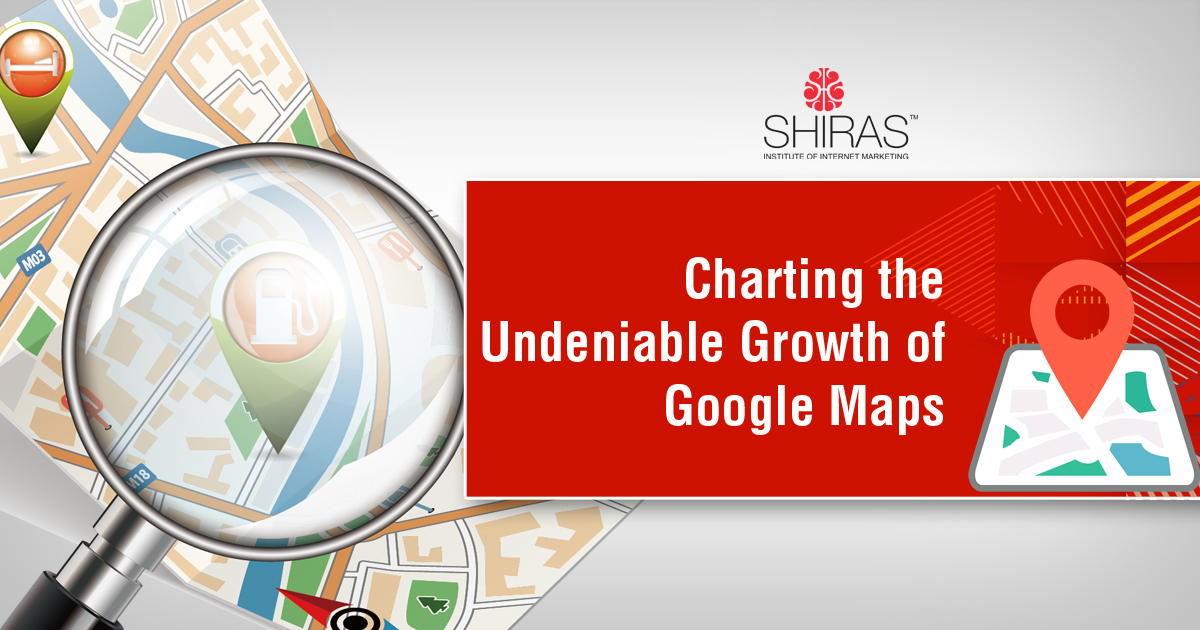
 Email
Email
[email protected]
 Phone
Phone
+91 70229 98695
Request Form
SIIM
- Home
- Blog
The Growth of Google Maps
27 Aug 2018 / By Admin

Are you lost - in a heavily populated area, trying to locate a well-known sweet shop? Or maybe you're trying to gauge how long it will take for you to pass over the bridge to reach the airport. Traditionally, we would ask a local for some directions or just wait through the traffic, not knowing any other short-cuts. But today, with the gift of technology and a subset of the household term Google Maps is here to show us the way, literally.
How is it different?
In simple terms, it is an online version of a regular map and was launched in February 2005, by Google. It shows possibly all the roads and streets leading to various destinations that we search for, with high accuracy. But it is not just restricted to that alone. The web mapping service offers features like satellite imagery, a 360° panoramic view of streets (called Street View), and real-time traffic conditions (Google Traffic). It also offers customized and available route planning based on your transportation preference. The transportation preferences are public transport (with bus routes), by foot, car, bicycle, and recently two-wheeler too.
Only roads and streets…Naah
Currently, over 220 countries use Google Maps. In August 2013, it said that it was used by over 54% of global smartphone owners at least once. Over the years, it has updated many countries and their geospatial details entailing millions of places. It includes major and minor hotels, restaurants, shopping centers, historical locations, and well-known public and government buildings. Museums, amusement parks, educational institutions, movie theatres, clubs are also accessible. Public services like petrol bunks, ATM's & banks, police & fire stations, and hospitals can be traced as well. Geographical specifics like parks, forests, rivers & lakes, flyovers, and bridges are also spotted. And they are all color-coded and can be zoomed in and zoomed out.
Access to a host of places
"We all know where we want to go, but seldom know which road to take." Google Maps has collaborated with a number of businesses and services, like cab services, public transport, hotels, and most locations. This ensures a better and more convenient user experience. And when you click on a place, you get more information about it like the contact details, open hours, and public reviews. All this is enhanced with features like "Your Places" and "Your Timeline" that stores your favorite places and helps keep track of them. And if you have difficulty describing or explaining an address to a friend, you can even share a location link through a popular messaging application.
Customization at its best
Traveling has never been so easy. Google Maps gives you real-time traffic density in probable places, calculate time and distance to a destination, and save offline maps. It also guides you through every twist and turn with voice navigation. This is especially useful when you need to use hands-free. What more? This app is multilingual. It is available in about 122 languages worldwide, including more than 10 major Indian languages.
How people's lives change for the better
The wonder of Google Maps became so practical that one search saves a lot of time locating a place. You no longer have to ask people and get confusing instructions like "Take a right, then third left, and then a fifth right..." With your device location embedded within the app, you can easily see where you are in your journey. The application gives regular updates of places, locations, and addresses to help users be led accurately.
Where is Google Maps "heading"?
Further on, the developers are diligently working on so many features that are set out to make life much smoother. It now provides better-personalized recommendations like the "For You" tab. It is also hinted that this wonder tool may begin suggesting users on petrol bunks, nearby cafes, emergency spots, etc.; based on the user’s preferences and location history. For example, if the fuel level of the vehicle dips down, you can be intimated of nearby fuel stations. Or you could even be warned and directed on taking diversions based on the area’s weather conditions.
The Maps has now turned into a necessity for everyone, especially when somebody is new to the area. So, what latest feature have you discovered on Google Maps? A traveler from the 18th-century might think “Getting to places is easy. Knowing how to get there, is the problem.” But not in this era with Google maps around.
- Career in Digital MarketingTuesaday - July 24, 2018
- Hashtags The Modern Wednesday - 25, 2018
- Online Marketing Boost Business GrowthTuesaday - July 24, 2018
- Overcome Social IssuesWednesday - July 25, 2018
- The Trending waves of Social MediaWednesday - July 31, 2018
- 6 Innovative Marketing IdeasMonday - Sep 10, 2018
- Just Pin itMonday - Sep 03, 2018
- The Power of InfluencersMonday - Sep 17, 2018
